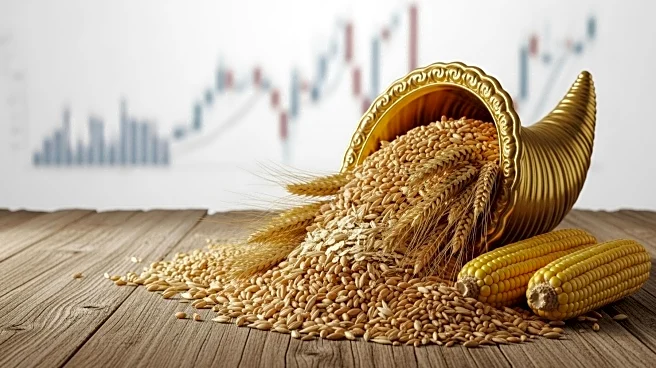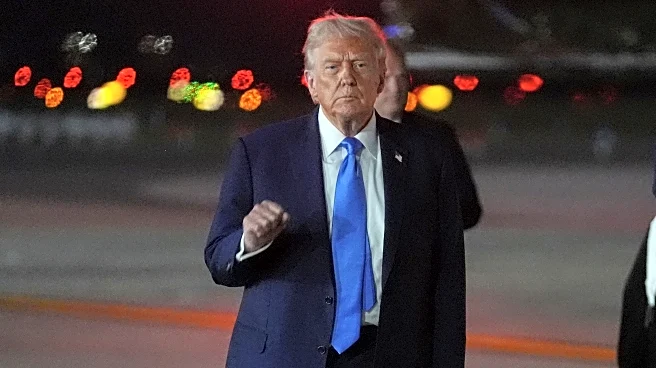What's Happening?
Argentina's soy exports have reached a seven-year high following a temporary suspension of export taxes, which has led to a trading surge. The country is expected to export 10.5 million metric tons of soybeans for the 2024/25 season, surpassing the previous record of 10.1 million metric tons in 2018/19. This development comes as Argentina seeks to stabilize its currency by generating foreign currency through agricultural exports. The tax suspension, which also applies to corn, wheat, and their by-products, is set to last until the end of October or until exports reach $7 billion. This move has significantly increased demand from China, which is looking for alternative suppliers amid its trade tensions with the United States.
Why It's Important?
The surge in Argentina's soy exports poses a challenge for U.S. soybean farmers and companies like Archer Daniels Midland, as it shifts global trade dynamics. The U.S. soybean market, valued at $47 billion, is experiencing increased competition from Argentina, which could lead to reduced market share and revenue for American farmers. The tax suspension in Argentina has made its soybeans more attractive to international buyers, particularly China, which has been diversifying its sources due to trade disputes with the U.S. This situation underscores the interconnectedness of global agricultural markets and the impact of policy changes on trade flows.
What's Next?
As Argentina's tax suspension is temporary, the market is expected to remain active even after taxes are reinstated, as companies have declared sales in anticipation. This could lead to sustained pressure on U.S. soybean exports. U.S. farmers and companies may need to explore new markets or strategies to remain competitive. Additionally, the situation may prompt discussions on trade policies and their implications for the agricultural sector in the U.S. and globally.
Beyond the Headlines
The tax suspension in Argentina highlights the influence of government policies on international trade and market dynamics. It raises questions about the sustainability of such measures and their long-term impact on domestic and global markets. The situation also reflects broader geopolitical tensions, particularly between the U.S. and China, and how these can affect trade relationships and economic strategies.












